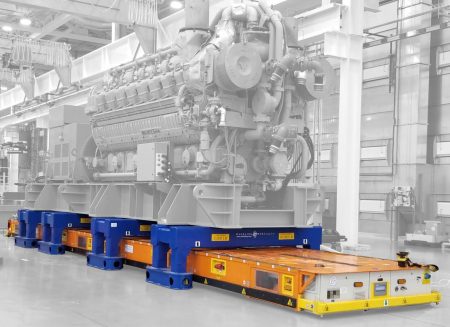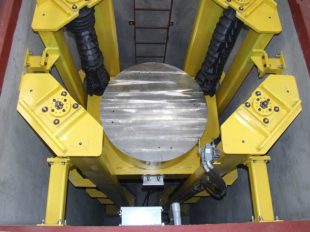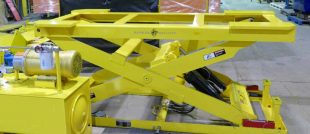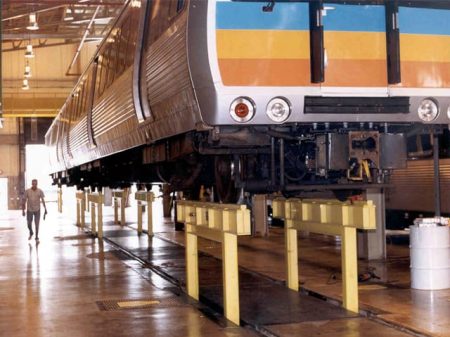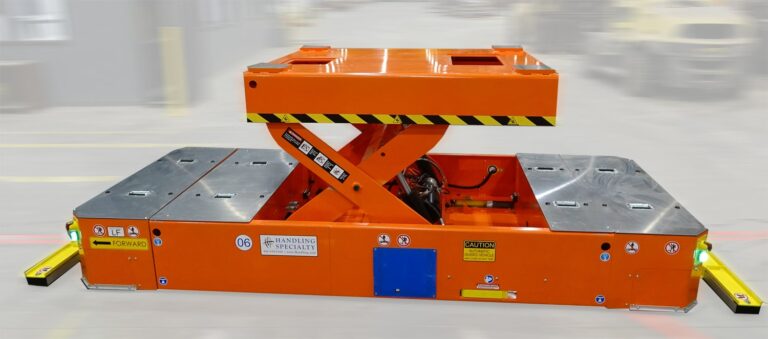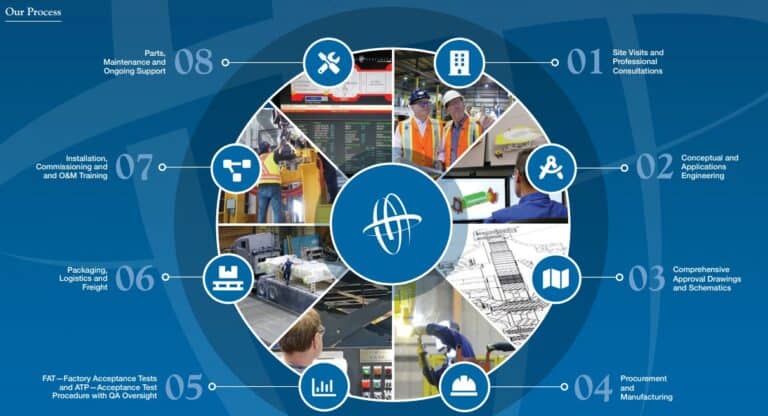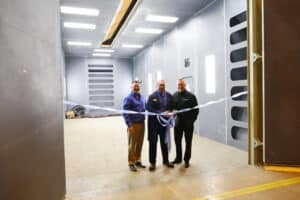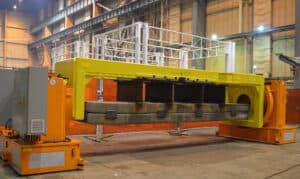Key Highlights
- Custom work positioners offer ergonomic material handling solutions that can be customized to meet specific needs
- They play a crucial role in modern facilities, improving efficiency and reducing the risk of work-related injuries
- Different types of work positioners are available, including adjustable work positioners and inverted work positioners
- Implementing custom work positioners can enhance welding positioning and inspection processes, as well as assembly and maintenance operations
- Key features of effective work positioners include multi-axis capabilities for versatile positioning and durability for heavy-duty use
- Selecting the right work positioner involves assessing specific requirements and comparing different models and custom options
- Real-world applications of custom work positioners have led to success stories in various assembly and MRO plants and factories
- Maintenance and safety tips are important to ensure the longevity of work positioners and operator safety
- Frequently asked questions provide additional insights into the advantages and uses of custom work positioners
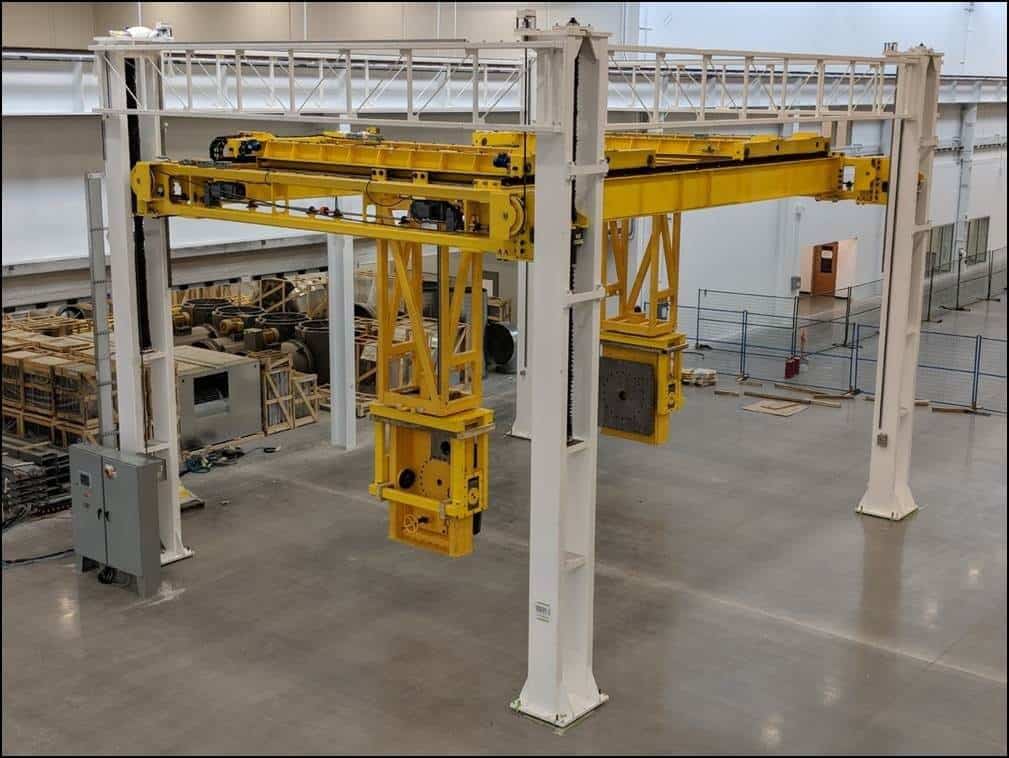
Introduction
Companies constantly looking for ways to streamline their assembly and MRO operations and improve efficiency often turn to the custom work positioner. One area where significant improvements can be made is in material handling. The process of moving, lifting, and positioning heavy loads is physically demanding and time-consuming. However, with the advent of custom work positioners, businesses now have the opportunity to optimize their material handling processes and improve worker ergonomics.
Specialized equipment like work positioners designed to assist in the ergonomic material handling of heavy loads can be customized to meet the specific needs of any facility, taking into consideration factors such as load weight, size, and the required range of motion. By implementing custom work positioners, companies can reduce the risk of work-related injuries, increase productivity, and enhance overall operational efficiency.
Understanding Custom Work Positioners
What are custom work positioners? An important piece of equipment designed to assist in the ergonomic material handling of heavy loads. It is typically used in industries such as manufacturing, assembly, and MRO. The main purpose of a work positioner is to provide a safe and efficient way to lift, move, and position heavy objects during assembly, inspection, and MRO applications, reducing the risk of work-related injuries and increasing productivity.
Major advantages of custom work positioners is their ability to be customized to meet the specific needs of a facility. This customization can include factors such as load capacity, lift height, range of motion, specialized tooling, rotation, and control options. By tailoring the work positioner to the specific requirements of a task or operation, companies can optimize their material handling processes and improve workplace ergonomics.
Custom work positioners are designed to be user-friendly and intuitive, reducing the learning curve for operators. They are typically equipped with user-friendly controls and safety features such as E-stops, motion sensors, limit switches, & audible and visual alarms to ensure safe and efficient operation. In addition, work positioners can be integrated into existing workflows and processes, minimizing disruption and maximizing efficiency.
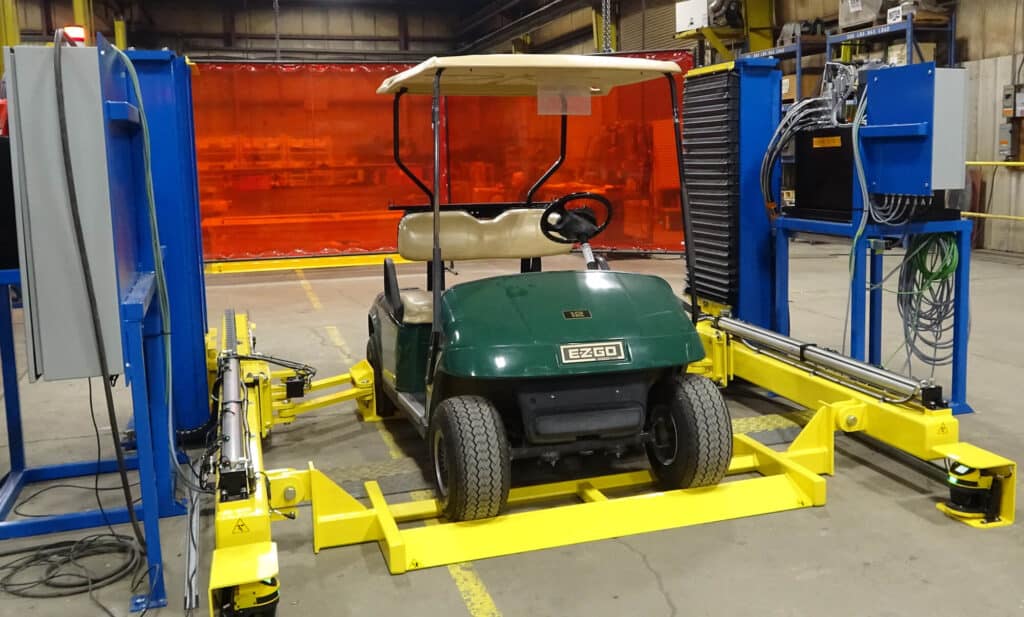
The Role of Work Positioners in Modern Facilities
Work positioners play a crucial role in modern facilities by improving material handling processes and reducing the risk of work-related injuries. Efficient material handling is essential for the smooth operation of a facility, as it directly impacts productivity and worker safety.
One of the key benefits of work positioners is their ability to optimize ergonomics in the workplace. By providing a safe and efficient way to lift, move, and position heavy loads, work positioners reduce the risk of musculoskeletal injuries and other work-related health issues. This, in turn, improves worker satisfaction, reduces absenteeism, and increases overall productivity.
Work positioners are also designed to handle a wide range of material loads, from small components to large machinery. They can be customized to accommodate the specific weight, size, and shape of the loads, ensuring safe and efficient handling. By reducing the physical strain on workers and improving the efficiency of material handling processes, work positioners contribute to a more streamlined and productive operation.
Different Types of Custom Work Positioners Explained
There are different types of custom work positioners available in the market, each designed to meet specific requirements and applications. Understanding the options available can help companies choose the right work positioner for their needs. Here are a few different types of work positioners explained:
- Adjustable work positioners: Providing flexibility and versatility in positioning heavy loads. They can be customized to meet specific height and angle requirements, allowing for ergonomic and efficient material handling.
- Head stock/Tail stock: These positioners are designed to turn a piece of equipment 360 degrees, offering full access to a technician while work is completed.
- Versatile work positioners: These positioners offer multi-axis capabilities, allowing for precise positioning of loads in multiple directions. They are suitable for tasks that require complex movements and flexibility in handling different types of loads. These kinds of custom work positioners can also be inverted if the application requires it.
By understanding the different types of custom work positioners available, companies can choose the right solution to streamline their material handling processes and improve operational efficiency.
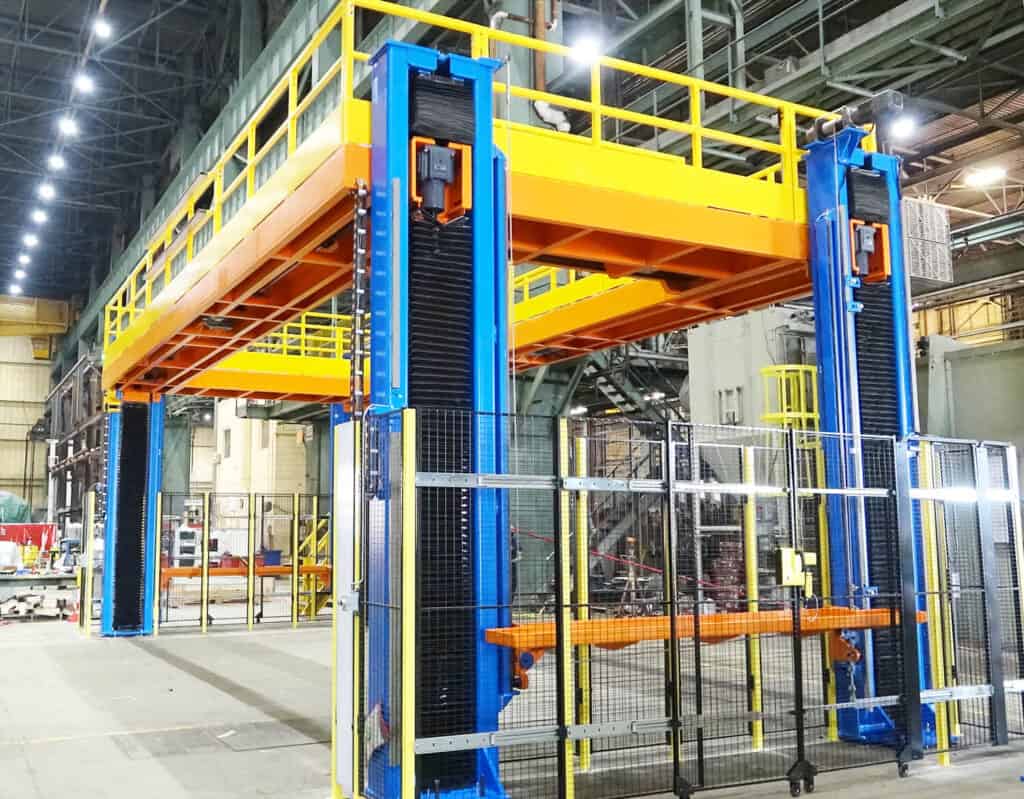
Benefits of Implementing Custom Work Positioners
Implementing custom work positioners offers numerous benefits for businesses. These benefits include improved efficiency, enhanced safety, ergonomic positioning, and increased productivity. By customizing work positioners to meet specific requirements, companies can optimize their material handling processes, reduce the risk of work-related injuries, and improve overall operational efficiency, whether it’s enhancing welding positioning and inspection processes or improving assembly and maintenance operations, custom work positioners offer a versatile solution for streamlining operations.
Enhancing Weld Positioning and Inspection Processes
Weld positioning and inspection processes are important aspects of any assembly and MRO industry, including manufacturing. Custom work positioners play a significant role in enhancing these processes, offering precise positioning of weldments and reducing the risk of errors.
One key features of work positioners is their ability to rotate workpieces, allowing for optimal weld positioning. By rotating the workpiece, welders can access all angles and positions, ensuring high-quality welds and reducing the need for rework, which improves efficiency, saves time, and enhances the overall quality of welds.
Additionally, work positioners equipped with a headstock and tailstock configuration provide stability and support during the welding process, which ensures accurate alignment and reduces the risk of distortion, resulting in stronger and more reliable welds.
Custom work positioners also facilitate the inspection process by providing easy access to all sides of the workpiece. Inspectors can rotate the workpiece and examine it from different angles, ensuring thorough inspections while detecting any potential defects or issues.
By enhancing weld positioning and inspection processes, custom work positioners contribute to improved quality, increased productivity, and reduced operational costs.
Improving Assembly and Maintenance Operations
Assembly and maintenance operations often involve heavy and cumbersome components that require precise positioning. Custom work positioners offer ergonomic material handling solutions, improving efficiency and reducing the risk of injuries during these operations.
Utilizing multiple axis of movement, work positioners provide the flexibility and precision required for complex assembly tasks. These positioners can be customized to accommodate the specific dimensions and weight of the components, ensuring accurate positioning and minimizing the risk of errors.
Work positioners can be tailored to meet the specific requirements of maintenance operations. For example, they can be equipped with adjustable height features to provide optimal working conditions for technicians. This reduces the risk of overexertion and musculoskeletal injuries, improving worker safety and productivity.
By improving assembly and maintenance operations through ergonomic material handling and customization, work positioners contribute to a more efficient and streamlined production process. They enhance worker satisfaction and reduce the risk of injuries, which results in increased productivity and cost savings for the company.
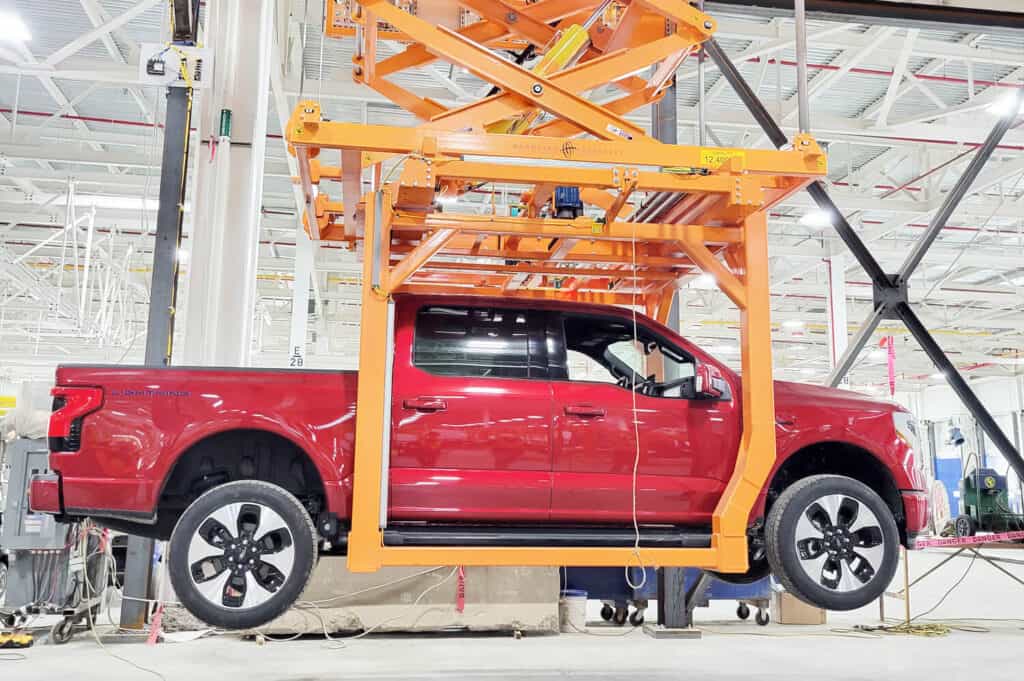
Key Features of Effective Work Positioners
Effective work positioners share several key features that make them reliable and versatile solutions for material handling. These features include multi-axis capabilities for versatile positioning and durability for heavy-duty use. By incorporating these features, work positioners can meet the specific needs of different industries and applications, providing safe and efficient material handling solutions.
Multi-Axis Capabilities for Versatile Positioning
One key feature of effective work positioners is their multi-axis capabilities. This feature allows for versatile positioning of heavy loads, accommodating a range of angles and orientations.
By offering multi-axis capabilities, work positioners can be adjusted to meet specific requirements, providing optimal positioning for different tasks and applications, this versatility enhances the overall efficiency of material handling processes, as loads can be positioned accurately and securely.
Adjustable work positioners are particularly useful for their multi-axis capabilities. They can be customized to provide precise movements along multiple axes, allowing for complex positioning and handling of heavy loads. This versatility makes them suitable for a wide range of industries and applications where flexibility is key.
By incorporating multi-axis capabilities into work positioners, companies can streamline their material handling processes and improve operational efficiency. They can easily handle various tasks, providing a versatile solution for different industries and applications.
Durability and Reliability for Heavy-Duty Use
Effective work positioners, especially for heavy-duty use, must have durability and reliability built in. They must be able to withstand the weight and demands of heavy loads for multiple hours and sometimes days as they move through the assembly line, providing long-lasting and reliable performance.
Work positioners for heavy-duty use are typically constructed using high-quality steel. Steel offers excellent strength, making it ideal for demanding industrial environments. It ensures that the work positioner can withstand the rigors of heavy loads and harsh operating conditions, enhancing its durability and reliability.
In addition to the materials used, effective work positioners also undergo rigorous testing to ensure their durability and reliability. These tests simulate real-world operating conditions and verify the positioner’s performance under different load capacities and usage scenarios before they ever leave the design/build firm’s premises.
By choosing durable and reliable work positioners, companies can minimize downtime, reduce maintenance costs, and increase overall operational efficiency. They can rely on these positioners to handle heavy loads consistently and safely, contributing to a more productive and streamlined operation.

Selecting the Right Work Positioner for Your Needs
Selecting the correct work positioner ensures optimal material handling efficiency and worker safety. It involves assessing specific requirements and comparing different models and custom options. By considering factors such as workload, handling specialty, and ergonomics, companies can make an informed decision and choose a work positioner that meets their unique needs.
Assessing Your Facility’s Specific Requirements
Assessing your facility’s specific requirements is essential before selecting a work positioner. This involves considering factors such as workload, handling needs, and ergonomics. Handling Specialty offers free assessments through our skilled and experienced technical salespeople.
First, evaluate the workload and determine the maximum load capacity the work positioner needs to handle. This will ensure that the selected positioner can accommodate the weight and size of the loads in your facility.
Next, consider your facility’s handling needs. Different industries and applications may require specific features or customizations in a work positioner. For example, if you work with fragile or sensitive materials, you may need a positioner with soft grip options or vibration dampening features. If you want your positioner to move through your assembly line, you will need a manual or automated guided vehicle with the positioner fixed to the AGV’s platform.
Lastly, consider the ergonomics of the work positioner. It should be designed to minimize the risk of musculoskeletal injuries and provide optimal working conditions for operators. Features such as adjustable height, easy-to-use controls, rotators, and safety interlocks contribute to ergonomic material handling.
By assessing your facility’s specific requirements, you can choose a work positioner tailored to meet your needs, optimizing material handling efficiency and worker safety.
Comparing Different Models and Custom Options
When selecting a work positioner, it is important to compare different models and custom options available in the market. This lets you choose the work positioner that best suits your facility’s requirements. This is a good time to approach a technical salesperson at Handling Specialty to review your options.
By comparing different models and custom options, you can make an informed decision and choose the work positioner that best meets your facility’s needs. Customization options allow for a tailored solution that optimizes material handling processes and ensures operational efficiency.
Real-World Applications of Custom Work Positioners
Custom work positioners have found applications in various industries, offering efficient and reliable material handling solutions. These real-world applications demonstrate the versatility and effectiveness of work positioners in improving operational efficiency and productivity.
Case Studies: Success Stories in Various Industries
Handling Specialty has several case studies highlighting the success stories of custom work positioners in various industries. For example, please visit our material handling solutions page and use the filter to discover custom work positioners in your industry.
Custom work positioners offer efficient and customizable solutions for specific handling challenges in manufacturing, assembly, and MRO industries. By tailoring the positioners to meet these industries’ handling requirements, companies can improve operational efficiency, reduce the risk of injuries, and achieve higher productivity levels.
Customization Makes a Difference
By leveraging customization in work positioners, companies can achieve a solution that meets specific requirements for their equipment being assembled, inspected, tested, and maintained. This results in improved ergonomic material handling, versatility, and overall operational efficiency. Handling Specialty’s material handling solutions are customized to suit any application.
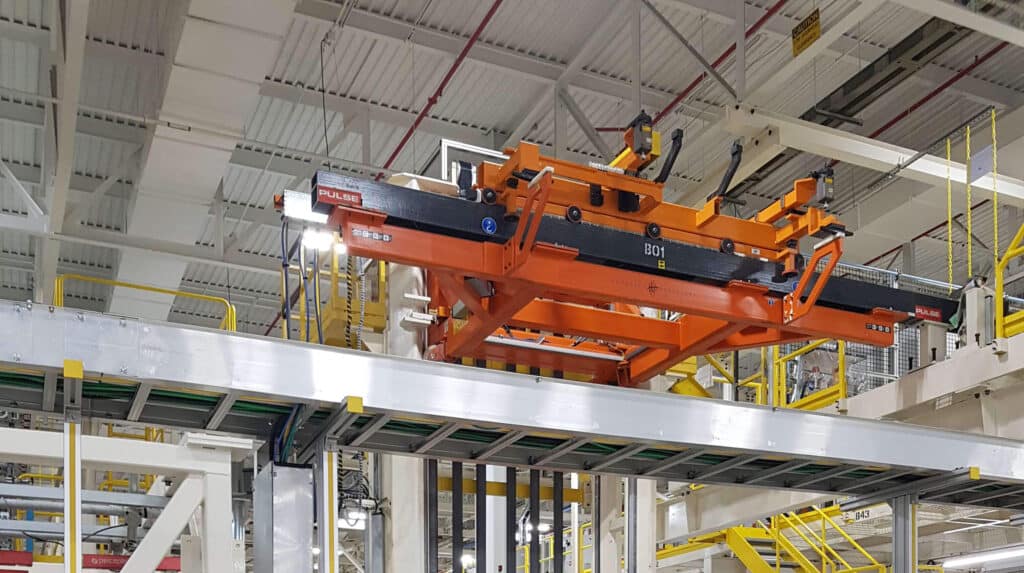
Maintenance and Safety Tips
Regular maintenance and adherence to safety protocols are crucial to ensuring the longevity of work positioners and operator safety. Implementing proper maintenance schedules and safety measures can minimize downtime, reduce the risk of accidents, and optimize the performance of work positioners.
Regular Maintenance Schedule for Longevity
The maintenance schedule of a custom work positioner should include routine inspections, lubrication, and cleaning of key components. This ensures that the work positioner operates smoothly and efficiently, reducing the risk of breakdowns and extending its lifespan. IIoT precautions can also be built into the positioner to help identify issues with the equipment before they lead to downtime.
In addition to routine maintenance, it is important to address any repairs or replacements promptly. Engaging with the manufacturer or authorized service providers can ensure that repairs are carried out by trained professionals using genuine parts.
Following a regular maintenance schedule and addressing repairs promptly, can maximize the longevity and reliability of work positioners, resulting in optimized material handling processes and reduced operational costs.
Safety Protocols to Ensure Operator Safety
Handling Specialty knows that operator safety is paramount when using custom, heavy-duty work positioners. Implementing safety protocols and providing proper training to operators can prevent accidents and ensure the well-being of employees and equipment.
Safety protocols should include guidelines for proper operation, safe load handling procedures, and ergonomic considerations. Operators should be trained on how to safely operate the work positioner, including understanding its limitations.
Ergonomics should also be considered to prevent overexertion and musculoskeletal injuries. Providing proper training on safe lifting techniques and encouraging regular breaks can help reduce the risk of injuries and improve operator comfort.
Additionally, work positioners should be equipped with safety features such as interlocks, emergency stop buttons, sensors, limit switches, and safety harnesses where necessary. Regular inspections and maintenance of these safety features should be conducted to ensure their proper functioning.
Companies can create a safe working environment for operators using work positioners by implementing safety protocols and providing proper training. This promotes operator well-being and reduces the risk of accidents, ultimately contributing to a more productive and efficient operation.
Conclusion
Custom work positioners play a crucial role in streamlining operations and enhancing productivity in modern facilities. With their custom capabilities, durability, and reliability, these tools offer significant benefits in welding, assembly, maintenance, and inspection processes. By selecting the right work positioner tailored to your facility’s specific needs, you can improve efficiency and safety standards. Real-world applications and success stories highlight the impact of customization on operational success across various industries. Remember to prioritize regular maintenance and safety protocols to ensure optimal performance and operator well-being. Consider the advantages of custom work positioners for versatile and efficient operations tailored to your requirements.
Looking for a solution for your work positioner needs? Contact Handling Specialty today!
Frequently Asked Questions
What Are the Most Common Customizations Requested?
The most common customizations requested for work positioners include adjustable height and angle options, traversing options, vibration-dampening features, and specialized fixtures. Stainless steel construction is requested for industries with hygiene and corrosion resistance requirements.
How Do Custom Work Positioners Improve Efficiency?
Custom work positioners improve efficiency by providing ergonomic material handling solutions tailored to specific requirements. Companies can optimize their material handling processes, reduce the risk of injuries, and increase overall productivity by customizing work positioners.
What are the advantages of using custom work positioners?
The advantages of using custom work positioners include improved ergonomics for specific applications, increased efficiency, and enhanced versatility. By customizing work positioners to meet specific requirements, companies can optimize material handling processes, reduce the risk of injuries, and achieve higher levels of operational efficiency.
Can custom work positioners be adjusted for different tasks or individuals?
Yes, custom work positioners can be adjusted for different tasks and individuals. Adjustable work positioners offer flexibility in positioning heavy loads, accommodating specific height and angle requirements. This customization allows for ergonomic and efficient material handling tailored to individual needs and specific tasks.

